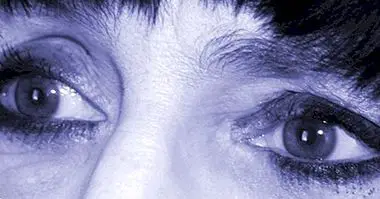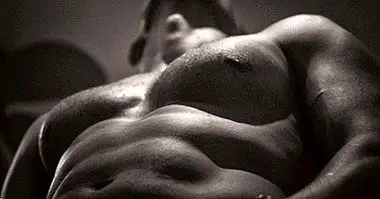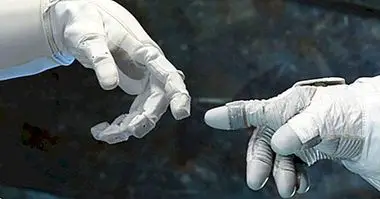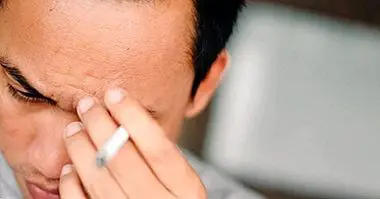Pogonophobia (fear of beards): causes, symptoms and treatment
One of the most outstanding trends of recent times is the beard, which has caused many men to leave it due to the aesthetic component. Some studies suggest that men with beards are seen as more attractive, and for some women it may even be a fetish. The excessive attraction for the beards is called pogonofilia.
However, not everyone thinks that beards are stylish, and some individuals may even develop a disorder called "pogonophobia" , the irrational fear towards the beards. In this article we will review some characteristics of this pathology and we will discuss its causes, symptoms and consequences.
- Related article: "The 15 most flattering beard types (with images)"
What is the fear of beards
The beard has been the symbol that characterizes masculinity. Over the centuries, it has represented many masculine virtues, including wisdom, strength, high social status, even sexual prowess, especially in warrior cultures. However, it also represents a phobic object.
There are many types of phobia, but few attract attention in the same way as the phobia towards facial hair, which refers to the irrational fear that some people feel toward the beards . especially towards the longest and most populated. This phobia was discovered in 1851, and the etymological origin of the word is found in Ancient Greece, since "pogon" means beard and "fobos" means fear. Phobias are anxiety disorders that cause anxious symptoms in the presence of bearded men.
Causes of pogonophobia
The reasons why a person may not like beards are very varied . For example, some people associate beards with men who care little and who can also be dirty. Other subjects link facial hair to religious fanaticism. In other cases, the beard may cause distrust or may be viewed as outdated or outdated.
Now, pogonophobia is a phobic disorder, and therefore, a serious pathology, which usually has its origin in classical conditioning. That is, it is an associative learning, which usually happens after a traumatic experience.
The first experiments on phobias in humans were carried out in the 20s, when the American psychologist John B. Watson and his assistant Rosalie Rayner, caused some babies to be afraid of white rats that they previously enjoyed.
- You can learn more about these studies in our article: "Classical conditioning and its most important experiments"
Other causes of this phobia
However, the traumatic experiences suffered by an individual are not the only reason for the origin of these phobias; rather, observation can bring about its development. It is what is known as vicar conditioning, when an individual observes the reactions of another person before a stimulus relevant to the subject as to who observes it. If you want to go deeper into this topic, you can read our article: "Vicar conditioning: how does this type of learning work?" To learn more.
Besides the learned origin of phobias, some authors affirm that these have a biological origin, and that human beings are more prone to develop these pathologies because fear is an emotion that develops through primitive and non-cognitive associations, that is, in the primitive brain and not in the neocortex, so it does not respond to logical arguments. This would explain why the phobic have serious difficulties in overcoming this pathology despite knowing that they suffer from this disorder .
Symptoms of phobia of beards
This phobia affects the quality of life of the people who suffer it. While some pogonopóbicos feel fear only to the whiskers, others suffer the phobia before the beards. The subjects with this phobia experience symptoms that can be cognitive, behavioral and physical.
Cognitive symptoms include fear, anguish, confusion and lack of concentration . Subjects with pogonophobia usually avoid the feared stimulus, which would refer to a behavioral symptom. Some of the physical symptoms are: hyperventilation, rapid pulse sweating and trembling, nausea and vomiting and dry mouth.
Treatment
As in the case of other phobias, pogonophobia can be treated. Psychotherapy has proven to be very effective, according to many researches.
There are different treatments depending on the orientation of the therapist . One of the most effective is cognitive behavioral intervention, which usually includes relaxation techniques and exposure techniques.
The objective of this last technique is to gradually expose the person to the feared stimulus, in this case the beard, until it does not cause fear or anxiety. Doing so gradually involves beginning treatment with exposure to exposure to the least disturbing stimuli, for example, seeing a picture of a person with little facial hair. The goal is to reach the most feared, for example, touch the beard populated by a person.
In this way, it is possible for the person to prove for himself that he is not in danger when facing these situations, and little by little the fear disappears and one learns that the beard is not synonymous with danger
Systematic desensitization
This technique is similar to the previous one, but the patient also learns coping strategies, for example, the breathing and relaxation techniques that cause a decrease in the level of activation. The treatment is carried out until the degree of anxiety and discomfort has decreased completely.
- Related article: "What is systematic desensitization and how does it work?"



















